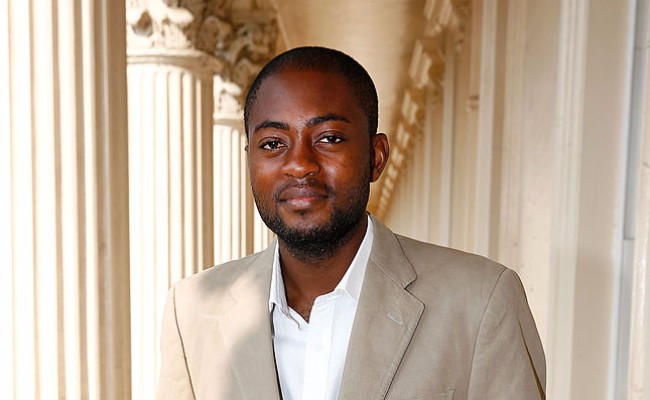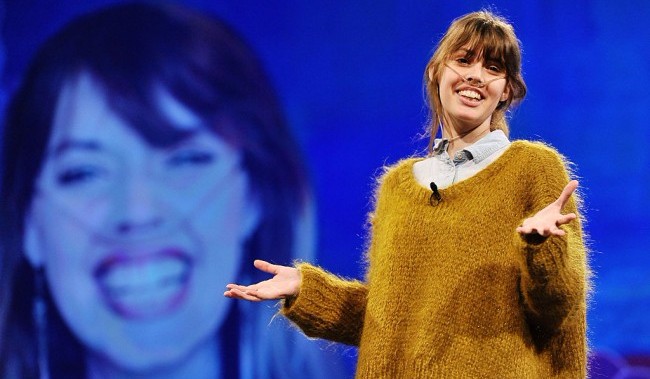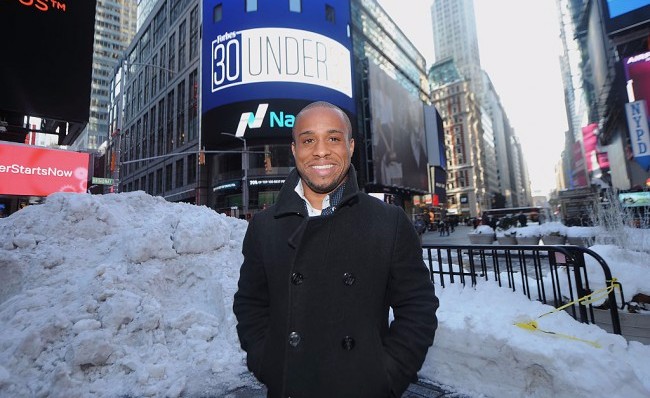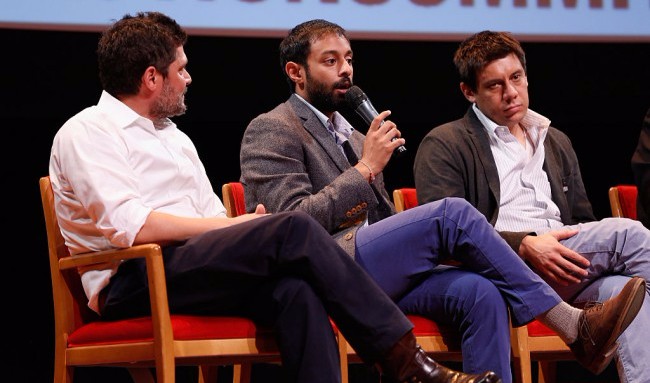Sometimes it’s hard to feel hope for the future. The world can seem like a dark, terrible place and it’s easy to get caught up in that despair. But as my mother told me recently, there’s always light in the darkness. And there are always good people to cancel out the bad. Because all it takes is one person to stand up and make a difference to remind you that there’s still so much beauty and kindness left in the world.
It’s wise to remind ourselves — no matter how bleak things seem — that there are still good people staying the course and fighting the good fight. They’re the people we should spend our energy cheering on. Because in such uncertain times, they certainly make the world a better place.
We’ve chosen nine young people who brought good to the globe in 2016. Nine people who went against the grain. They are courageous, smart, and kind and they are our hope for 2017. As this (awful) year ends, let’s take the words of Anne from Anne of Green Gables to heart. “Tomorrow is always fresh with no mistakes in it.” And with powerful, smart, kind young people like these in our tomorrow, maybe just maybe, next year will be better than the last.
Arthur Zang

When Arthur Zang invented the Cardiopad — a tablet that allows health workers in rural areas to take a heart reading and instantly send the results to a specialist — he knew there was great need for such a device. As the BBC reports, in Cameroon, Zang’s home nation, there are 20 million people and just 50 cardiologists. As such, heart patients in rural communities often had to travel long distances, and wait months for appointments. Some die in the process. Now patients can visit a local nurse or clinic and get results from a specialist in under 20 minutes. Truly a huge innovation, and life saver.
This year, Zang was awarded the Africa Prize for Engineering Innovation by the UK’s Royal Academy of Engineering.
Claire Wineland

Claire Wineland was born with Cystic Fibrosis, a progressive, genetic disease that causes mucus build up in her lungs and internal organs. When she was born her parents were told that she wouldn’t live to adulthood, but Wineland has defied the odds with grace and humor. Most, would have a hard time dealing with such a prognosis, but Wineland uses her illness to educate others about disabilities and death with a series of heartfelt and hilarious talks, Youtube videos, and written pieces.
After she nearly died in a coma at age 13, Wineland started Claire’s Place Foundation to help families (of those with CF) deal with the financial implications of long hospital stays. She’s spends her energy helping others, which makes her a truly remarkable young woman.
Divya Nag
At the forefront of stem cell research, Nag dropped out of Stanford at 20 years old to found Stem Cell Theranostics, a “biotechnology company committed to revolutionizing the drug discovery process by performing the first ‘clinical trial in a dish’ through the use of patient-specific beating heart cells derived from skin.” And while we may not all totally understand what that means (basically she can do the trial without needing to have people involved), Nag is clearly an innovator in her field. She looks to shake things up, and inspires others to start their own health companies.
To do so, she started StartX Med a non-profit medical innovation program that has raised over 400 million dollars and helped more than 100 health tech companies launch. She is a kick-ass scientist, and a huge inspiration to other young women looking to get into stem cell research and science fields.
Christopher Gray

Christopher Gray knew the odds were stacked against him. The child of a single mother, no one in his family had ever gone to college. But determined to continue his education, Gray began looking for scholarships. It was ridiculously difficult, but Gray persevered. In the end, he won 1.3 million dollars in scholarships. Things had worked out for Gray, but he thought of all the other students who needed aid, and knew he wanted to do something to help them. Especially when he learned over 100 million dollars in aid went unused each year. So he turned his experience into good by creating an app he called, “Scholly.” Scholly matches students with scholarships that might be right for them, and has been featured on Shark Tank. Since its inception, Scholly has helped students raise more than 50 million dollars in aid.
Jordyn Lexton
https://www.instagram.com/p/6-0gccpiy6
Jordyn Lexton was a high school teacher on Ryker’s Island for three years. While teaching, Lexton found out that New York is only one of two states that automatically tries 16-year-olds as adults. Lexton watched 16, 17, and 18 year olds get shuffled through the prison system and felt heartbroken. So Lexton decided to do something about it.
Lexton founded Drive Change to give employment to youth who had been in prison. The org helps these 16-25 year olds by using food trucks as a workplace to run a year long paid Fellowship for young people returning home from prison. It helped them create employment histories and gives them an income. In the future, Lexton hopes to change the recidivism rates in the New York justice system for these young adults.
Nedgine Paul
https://www.instagram.com/p/BL_UTbSAwcZ
Nedgrine Paul is originally from Haiti but moved to the U.S. when she was young. She maintained strong ties, however, to the Haitian community and saw huge educational disparities in the region. This led to her founding the organization, Anseye Pou Ayiti (Teach For Haiti). The organization seeks to raise education outcomes in rural Haiti by promoting teacher excellence and student success. Paul has used her education and opportunities to give back to the people of Haiti and improve education.
She’s also conducted teacher training seminars and extensive research about the historical, cultural, and socioeconomic factors contributing to Haiti’s school system.
Anna Stork
When earthquakes hit Haiti, Anna Stork and her partner, Andrea Sreshta, wanted to design something to help. Many people focused on food, water, and shelter, but Stork and Sreshta thought about safety in the tent cities that were popping up, and decided that light was needed. They designed a revolutionary emergency light source called Luminaid. It’s solar powered, waterproof (it even floats), and can be charged hundreds of times. Their innovation has since helped scores of people — literally shining a light through difficult times.
Catalin Voss
Catalin Voss has taken google glass and repurposed it to help kids with autism. The 20-year-old inventor developed emotion recognition software for the product. A child with autism can wear the glasses and they will read the facial expression of the person they’re interacting with, helping them to distinguish whether the person is happy, sad, or angry.
This helps the autistic child navigate the appropriate response. Trials for the glasses have been overwhelmingly positive with parents and teachers noticing kids being able to make more eye contact and be more engaged with human interactions.
Anoop Jain

India is dealing with a severe water crisis. 600 million Indians lack access to proper sanitation and over 75 million have little access to clean drinking water — something that Anoop Jain has spent the better part of six years working to combat. Jain founded an organization called Sanitation and Health Rights in India (SHRI). The organization works with local communities to stop open defecation in rural areas, a huge problem in many parts of India. Jain’s organization builds free public toilets and water purification facilities in these communities is promoting real change and his efforts have helped thousands find access to proper sanitation.






